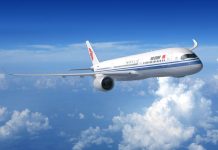Offering priceless insights to Sri Lanka’s glorious past is the well-received Kelaniya Raja Maha Viharaya which stands proudly as a logo of culture and veneration.
Introduction
As chronicled within the Mahavamsa, the Buddha together with 500 bhikkus was invited to evangelise the dhamma to King Maniakkhika of the Naga tribe in an effort to bring a couple of settlement between two warring Naga kings, namely Mahodara and Culodara. Therefore, it’s established that these teachings were conducted on the positioning where the Kelaniya Raja Maha Viharaya stands.
Construction of a stupa
At the very location where the Buddha sought refuge and taught, an impressive stupa was built enshrining a gem-studded throne seat and other utensils in a fashion that paid homage to the Buddha. Though, this event occurred throughout the fifth century BC, a more in-depth inspection of the chronicles reveal that renovation of the stupa had been overseen by King Uttiya within the third century BC.
Colonial influence
The stupa was to suffer by the hands of the Portuguese who destroyed same in 1575. However, with the arrival of the Dutch, the Kandyan King, Kirthi Sri Rajasingha was granted permission to revive the stupa to its former glory days. The then chief incumbent, Venerable Mapitigama Buddharakkhita thero was tasked with managing these efforts.
Later years
The final chapter of development saw the sunshine of day within the yr 1888 under the watchful eyes of Mrs. Helena Wijewardana. During the next 20 years, the deteriorated paintings were once more restored by the expert artist, Solius Mendis.
Getting there

The Viharaya is situated a mere 6 km from Colombo and could be accessed by travelling along the Colombo-Kandy road. After turning towards Biyagama on the 4th mile post, the stunning structure will soon fall into focus. If you must know where to remain in Colombo and reach the Viharaya, then consider Cinnamon Red Colombo.
Escape the ordinary and discover the extraordinary! From bustling cities to serene landscapes, every journey begins with a single step—let us guide yours. Enjoy curated itineraries, hidden gems, and hassle-free bookings designed for explorers at heart. Whether it's a weekend getaway or a globe-trotting adventure, your Next unforgettable experience is just a click away.










